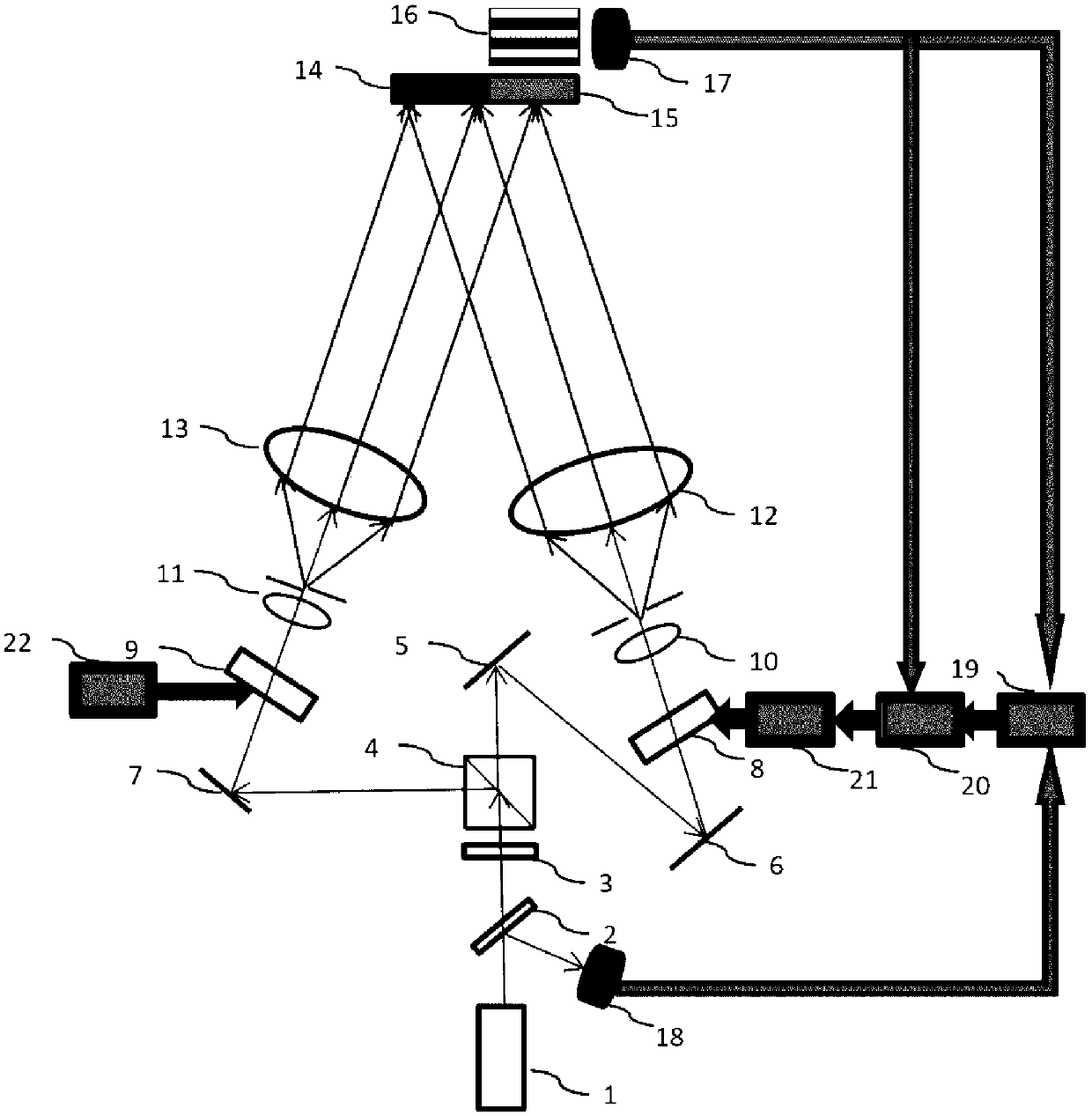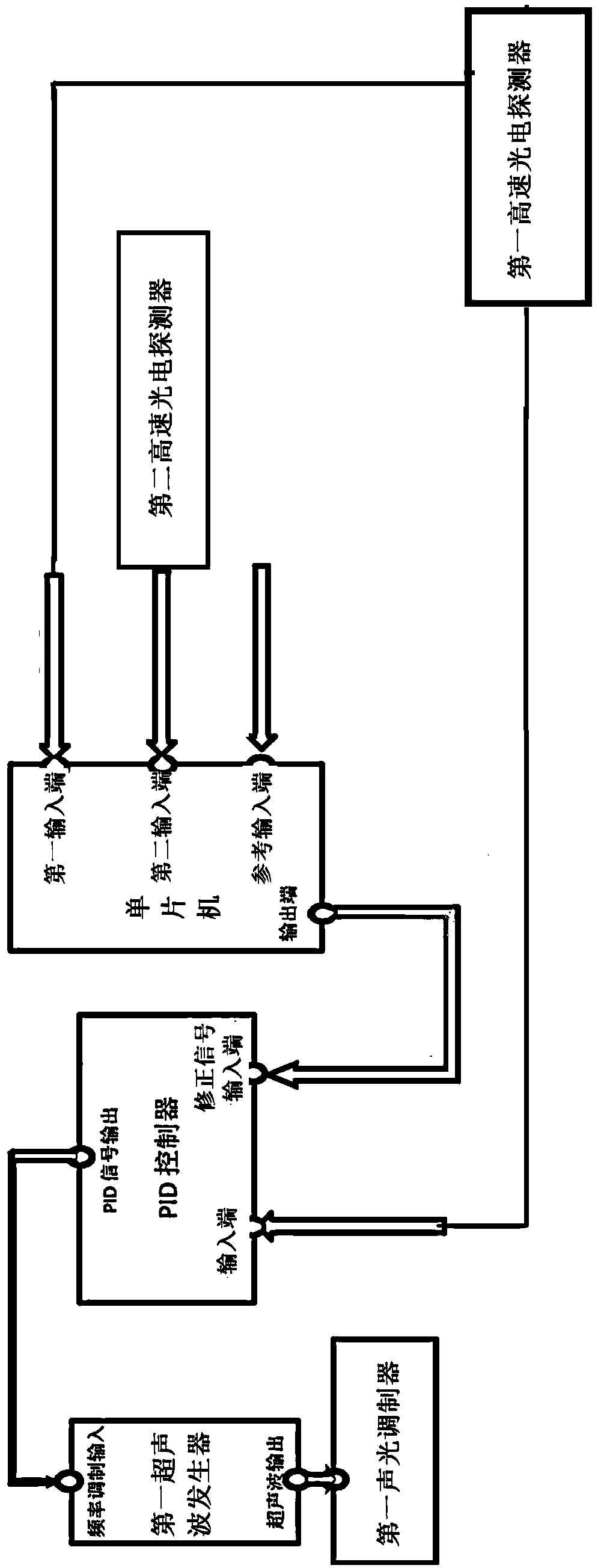Fringe locking type holographic interference photoetching system and fringe locking method
A holographic interference and lithography system technology, applied in microlithography exposure equipment, optics, optomechanical equipment and other directions, can solve problems such as the decrease of the contrast of recording fringes
- Summary
- Abstract
- Description
- Claims
- Application Information
AI Technical Summary
Problems solved by technology
Method used
Image
Examples
Embodiment 1
[0017] A fringe-locked holographic interference lithography system, such as figure 1 As shown, it includes a laser 1, a beam sampling grating 2, a half-wave plate 3, a beam splitting prism 4, a first plane mirror 5, a second plane mirror 6, a third plane mirror 7, and a first acousto-optic modulator 8 , the first ultrasonic generator 21, the second acousto-optic modulator 9, the second ultrasonic generator 22, the first spatial filter 10, the second spatial filter 11, the first collimating lens 12, the second collimating lens 13 , the grating substrate 14 to be exposed, the reference grating 15, the first high-speed photodetector 17, the second high-speed photodetector 18, the PID controller 20, the single-chip microcomputer 19; the reference grating is arranged on the grating substrate to be exposed, And the surface of the reference grating is in the same plane as the surface of the grating substrate to be exposed; the light emitted by the laser passes through the beam sampli...
Embodiment 2
[0019] A fringe locking method for a fringe-locked holographic interference lithography system, comprising the following steps,
[0020] Step 1, making reference grating: After adjusting the optical path of the holographic interference lithography system, place the reference grating substrate to be prepared at the position of the reference grating, set the frequency of the first ultrasonic generator to f1 (105MHz~115MHz), set the second The frequency of the ultrasonic generator is f2 (105MHz~115MHz), and f1=f2 is guaranteed. The reference grating substrate to be prepared is exposed and developed, and the developed reference grating is placed in its original position to call out Moiré fringes. The fringe period interval is 1cm~2cm, project the moiré fringes into the first high-speed photodetector, and adjust the position of the first high-speed photodetector so that its photosensitive surface is located in the middle of the dark moiré fringe and the bright fringe.
[0021] Step...
PUM
 Login to View More
Login to View More Abstract
Description
Claims
Application Information
 Login to View More
Login to View More - R&D
- Intellectual Property
- Life Sciences
- Materials
- Tech Scout
- Unparalleled Data Quality
- Higher Quality Content
- 60% Fewer Hallucinations
Browse by: Latest US Patents, China's latest patents, Technical Efficacy Thesaurus, Application Domain, Technology Topic, Popular Technical Reports.
© 2025 PatSnap. All rights reserved.Legal|Privacy policy|Modern Slavery Act Transparency Statement|Sitemap|About US| Contact US: help@patsnap.com



